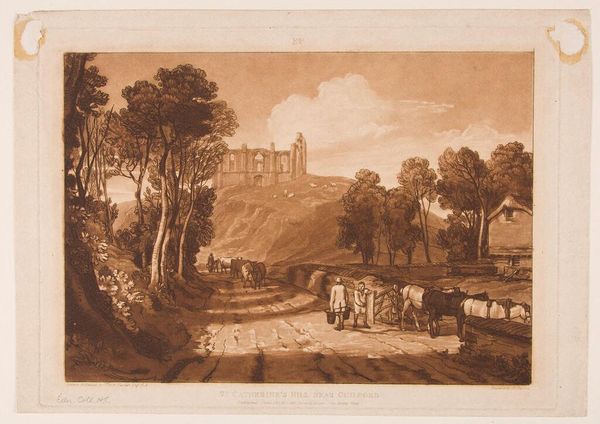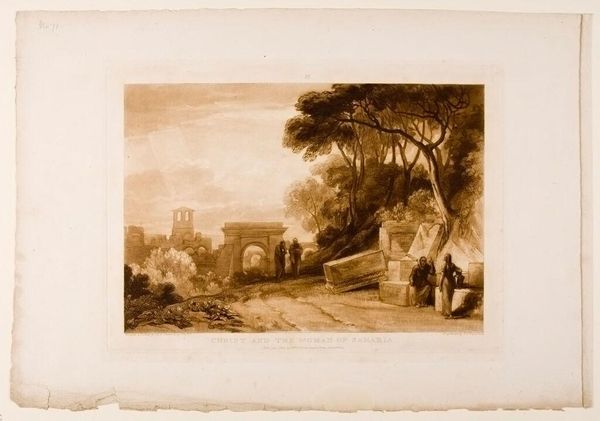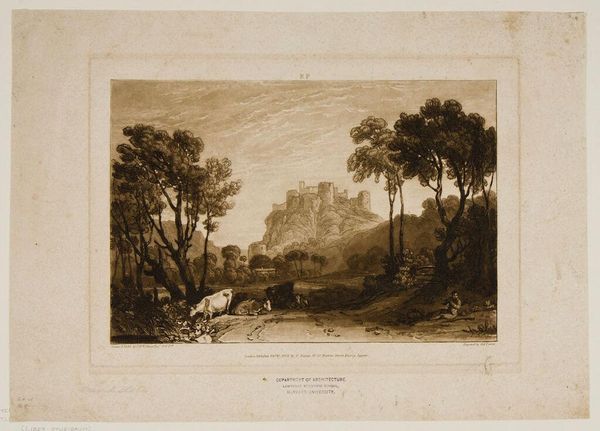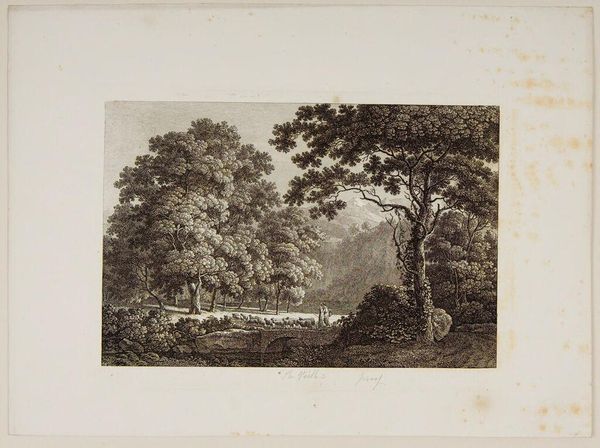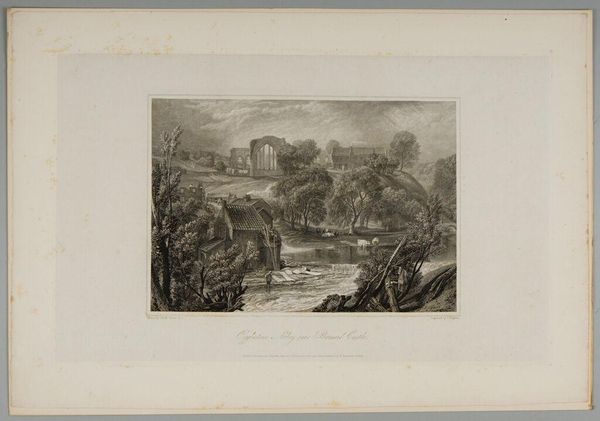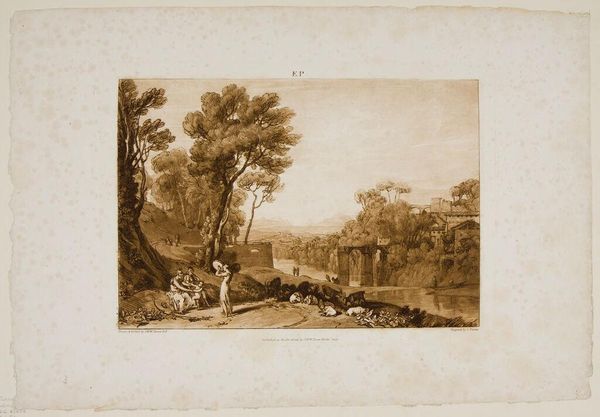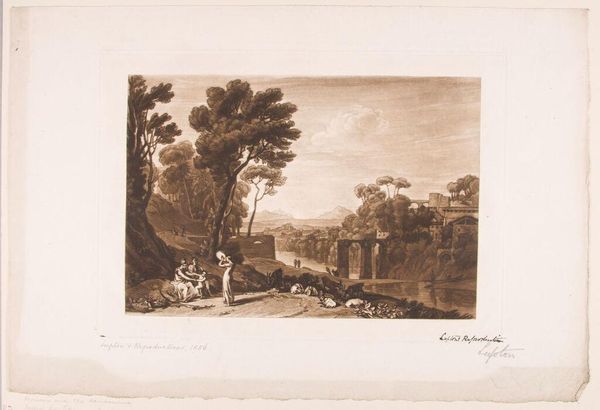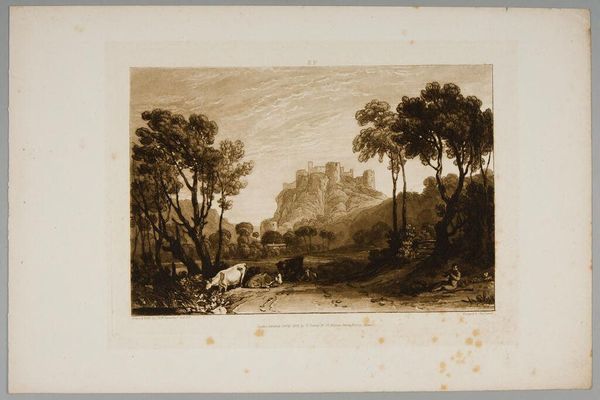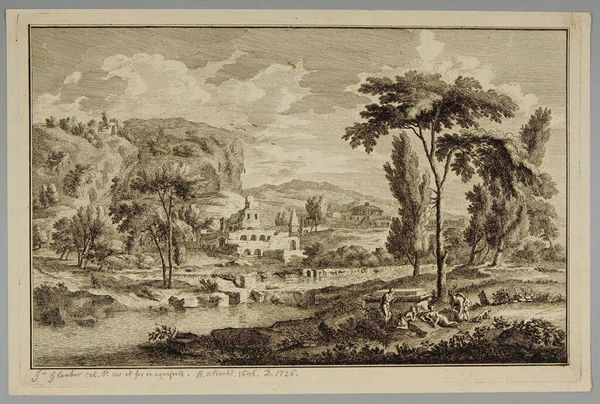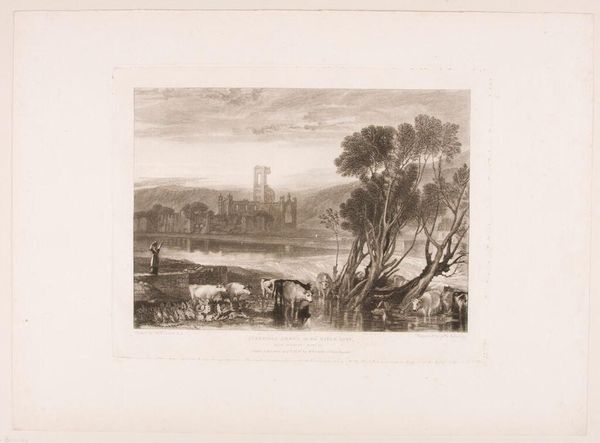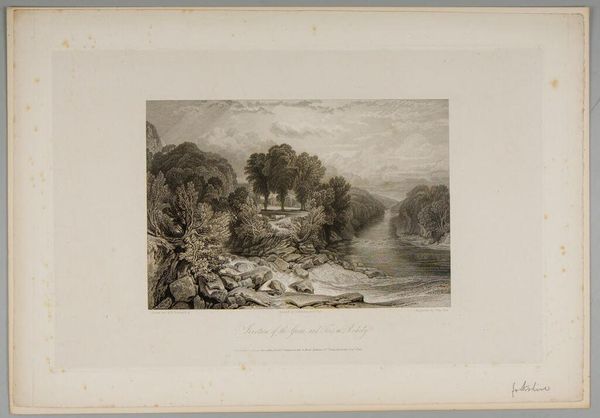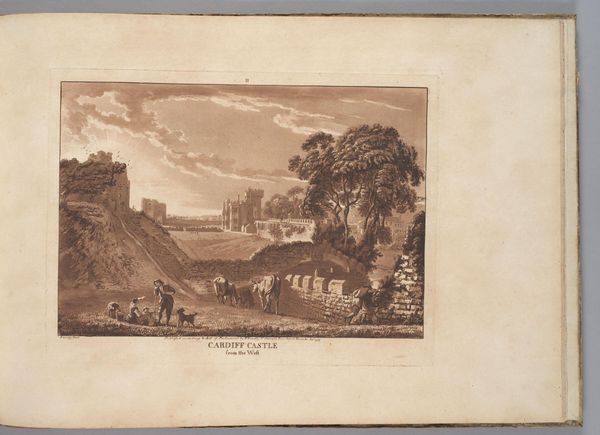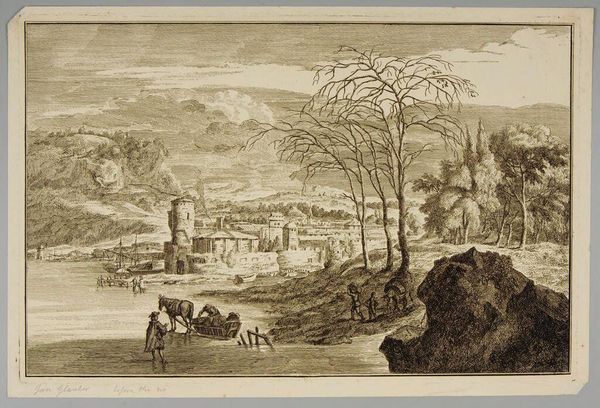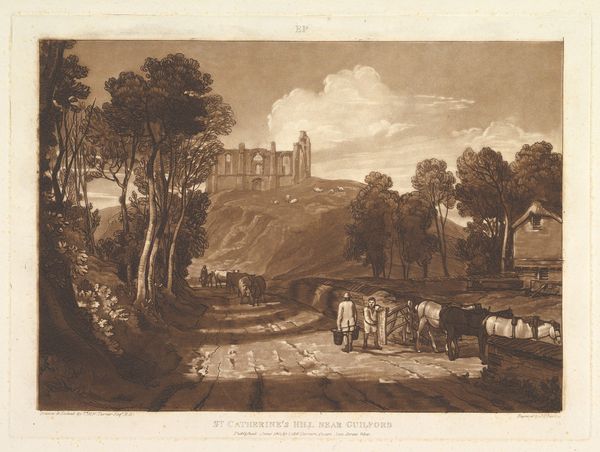
Copyright: CC0 1.0
Curator: I'm immediately struck by the quietude of this sepia print. It's J. C. Easling's "Saint Catherine's Hill near Guilford". It feels like a memory, a gentle echo. Editor: It does evoke a certain stillness, doesn't it? This image presents us with a slice of rural life, perhaps from the late 18th or early 19th century, judging by the style and subject matter. We see laborers, livestock, and ruins. This is a picturesque representation of English identity. Curator: Those ruins perched on the hill have a ghostly presence. It's as if the past is watching, a silent observer to the daily toil below. The warm tones give it a romantic cast, a sort of wistful beauty. Editor: Indeed, the ruins point to a shift in power and land ownership, as well as the transformation of sacred sites into picturesque elements within the landscape. Easling’s print reflects a very specific view of England’s heritage. Curator: It makes you wonder about the stories those stones could tell, about the lives that brushed against them, the changes they've witnessed. A simple scene, yet so layered. Editor: The image is beautiful, but its appeal rests on a very particular historical understanding, one shaped by the aesthetics and politics of the time. It's a curated vision of the past for a specific audience.
Comments
No comments
Be the first to comment and join the conversation on the ultimate creative platform.
